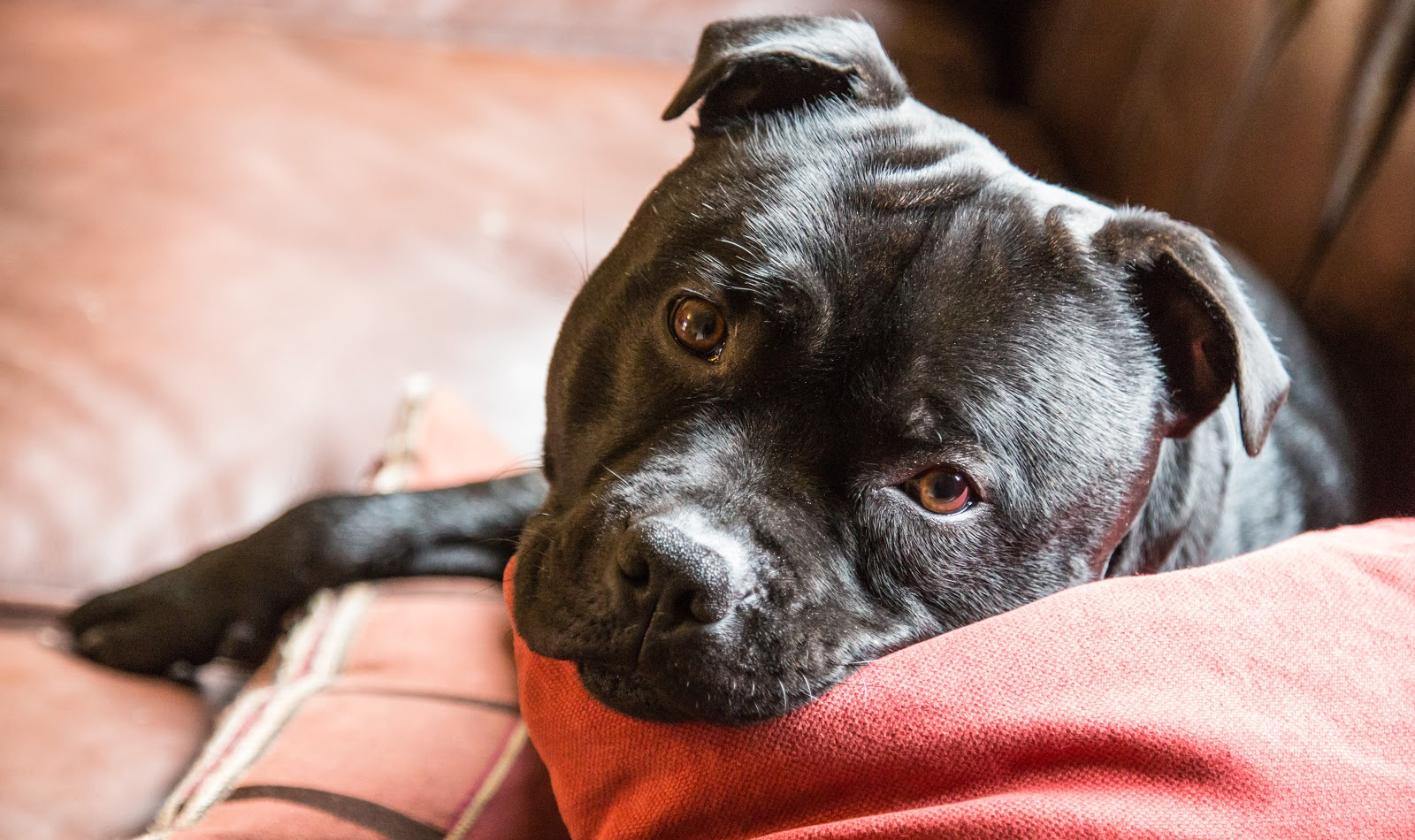Crate training is a valuable skill for pet owners to teach their dogs. For instance, it’s an easy way to ensure your dog doesn’t cause a raucous when you aren’t home. So it makes sense why people with an adult dog would ask whether it’s effective on them.
As a result, I developed a guide that’ll dive into this topic and show why it’s possible. I’ll also discuss its benefits and how to do it properly. All this information will ensure you’ll never have to worry about coming home and finding all your furniture ripped apart!
Can Adult Dogs be Crate Trained?
In most cases, an adult dog will have no problem with crate training. But it takes more effort than you’d experience with younger dogs or puppies.
But crate training an adult dog is a manageable task. It’ll just require your patience and time to ensure it goes smoothly. So there’s no need to rush the process, especially with older dogs without prior crate exposure.
If you do rush the training, it could create an untrainable situation. Remember, confinement without proper training is a shock to the system for any dog. Your dog may become overly scared of their crate, which defeats the entire process. So it’s essential to make this process as comfortable as possible.
The Difficulties of Crate Training an Adult Dog
Your patience will help you deal with the inevitable difficulties during this process. Older dogs are more stuck in their ways than their younger pups. So getting them to learn new things is more challenging than an eager puppy.
Basically, adult dogs have a routine and enjoy sticking to it. It isn’t much more difficult than teaching an older person to use unfamiliar technology. There may be some initial struggles, but eventually, they’ll get it.
It’s also worth noting that some older dogs will also break this stereotype. You may have an adult canine who enjoys the quiet and immediately takes to the crate training. I could easily see a smaller, easily trainable breed like Chihuahuas being this way.
How to Crate Train Your Adult Dog
In this section, I’ll teach you how to ensure crate training is smooth. You’ll then have no worries whenever you must leave the house or travel with a crated dog. Honestly, it makes everything about being a dog owner much easier.
But before I dive into the steps, ensuring you have all the required materials is vital. Here’s a quick checklist of all the items needed to complete this training process smoothly:
Dog crate: This process isn’t going anywhere without an appropriately sized crate. So choose one suited to your dog’s needs and size. It’ll need to allow your pup to stand up and lie down without issues.
Treats: Get a bag of your dog’s favorite treats. I’d recommend a smaller treat option because they’re much easier to use as a positive reinforcement reward.
Food bowl: You’ll need somewhere to place treats inside their crate, such as a treat-dispensing toy or food bowl. It must fit inside the enclosure alongside your dog, so pay attention to its size.
Dog bed or crate mat: Creating a comfortable inside the crate is necessary for a successful training experience. The easiest way to comfort them is with a dog bed or crate mat that offers a soft surface for sitting.
Pet camera: Optional item to check on your dog’s progress when you’re away from home. I’d strongly recommend one for any owner with a dog struggling with separation anxiety.
Once you’ve collected these essential items, move on to our first step. You’ll soon have your dog using its crate as a secondary sleeping spot in no time!
Step 1: Select an Ideal Spot for Their Crate
Crate placement is crucial to ensure a dog’s comfort with using one. After all, your dog isn’t going to enter one if it’s in a location where they don’t feel safe. These locations would be an absolute non-starter for this process.
Instead, select an easily accessible area with little noise. But refrain from choosing an isolated area away from the rest of your home, such as the garage. Nobody likes staying in a garage alone and your dog won’t either.
So look for some balance between quiet and normal areas where they spend significant time. For instance, I ended up choosing a corner spot right in my living room.
Step 2: Gain Your Dog’s Attention
After finding a suitable location and setting up their crate, it’s time to grab your dog’s attention. You’ll need to make the crate an exciting place for them to explore. So grab those handy treats and lock them inside the enclosure.
Your dog’s eyes should turn almost immediately to the crate. Proceed to let them smell around the locked crate: expect a lot of pawing at the crate’s front gate. Keep it locked with the treats inside for a day or two.
If your dog loses interest in the crate, don’t hesitate to swap out the treats with new ones. It’ll regain their interest and ensure your dog’s ready for our next step. It won’t work if your dog doesn’t find the crate intriguing.
Step 3: Let Your Dog Explore Their New Crate
It’s time to open the crate and let your dog’s exploration begin. It shouldn’t take more than a moment for them to demolish those treats, especially with all the build-up. My dog almost did the “Breakfast Club” slide when first being allowed into the crate to grab their treats.
After they inhale their treats, I’d suggest giving them a few extra treats. It’ll reinforce the crate as a positive space while keeping its door open.
Once your dog leaves the crate, place some more treats inside and lock it. Continue repeating this step until your canine walks into it every time the door opens. Again, it’ll help them see their crate as a place where they get rewarded.
Step 4: Use the Crate During Meal Times
Another easy trick to get your dog comfortable with the crate is using it around meal times. I’d leave it open about 30 minutes before to pique their interest. You can then place their food bowl/toy into the enclosure.
In response, your dog will enter the crate to get their food. However, don’t shut the door behind them; I made this mistake the first time around and spooked my pup. So I quickly learned its better to keep the enclosure open until they leave, then close it with the food dish or toy inside it.
You’ll then want to open it again when they want to be let back into it. If they leave again before the meal is done, shut the door again once they leave. Repeat the process until all their food is consumed. After awhile, your dog will start to understand what’s happening.
Step 5: Get Your Dog Comfortable With a Moving Crate Door
Getting them comfortable with an open crate is the easy part. The more challenging part is making them feel safe in a closed crate. It’s a much more gradual process, which will require a bit more time and effort.
You’ll want to start by opening the crate, dropping in treats, and letting your dog enter. Once they enter, try moving the door a small amount (about an inch in either direction) and proceed to place a treat into the cage.
Continue the process until your dog doesn’t react negatively to the door moving. But don’t force them to stay in the crate if they want to leave. Doing so will only create a further negative association with the door moving. If they do go, put treats into their crate and shut the door behind them immediately like you did previously.
Once they’ve shown comfort with the crate’s door moving, it’s time to up the ante. Move the door slightly more than before and place a treat inside it. If your dog remains calm, gradually move the door further and further until it’s shut.
As with the previous steps, let your dog leave the cage whenever they want. But always leave a treat behind and shut the door after they exit. It should remain there until you begin the process again.
Step 6: Time to Lock it Up!
Your next step is locking the crate after they become comfortable with it closed. This process should be done in increments to avoid inducing any unnecessary anxiety. So start by locking the door and dropping in some treats.
Once it’s locked, leave it for one minute and then open the crate. Most dogs will respond by immediately leaving. If they do, close the door behind them and leave some treats like the previous steps. Continue to do a one-minute time limit until your dog remains inside after you open it.
After they clear the one-minute hurdle, hand them a toy to chew inside the crate. It’s another way to ensure they feel comfortable and build a positive association. Additionally, give them a few extra treats.
You’ll then want to step away from the crate while they’re locked inside it. It should only be a few steps, but it must be a considerable distance further than with other sessions.
Stay away for a few seconds and return to the crate with more treats. If your dog remains calm, try stepping away for extended periods and giving them more treats.
Step 7: Ramp Up to More Extended Stays
Continue working on increasing your time and distance away from the locked crate. Eventually, it’ll get to the point where a final test is warranted.
Set up a pet camera and test how they respond to being left alone in the crate during an errand like grocery shopping. But remember, keep giving them treats whenever they’re locked inside to encourage good behavior.
You’ll also want to continue these training sessions, as practicing is a great way to keep a learned behavior sharp. Over time, your dog will be more comfortable with extended stays. You even be able to stay away for a few hours without coming home to any issues.
5 Benefits of Crate Training For Adult Dogs
So after learning to crate train their dogs, certain readers may be wondering what’s the payoff for this training. Well, a properly used dog crate can make an owner’s life much easier in several ways. Here’s a quick overview of some benefits that you gain with successful crate training:
1. Makes Travel Much Easier
Traveling with a dog is one of the most anxiety-inducing events an owner can experience. But it’s much less stressful with a dog who’s crate trained. You simply place them in a secure crate that helps ensure there aren’t any issues during the ride.
You’ll also have a safe place to put them if they need to be alone in an unfamiliar location. After all, you don’t want them tearing up a hotel room or AirBnB while you’re enjoying the sights. A crate and proper training can ensure it doesn’t happen.
2. Encourages Better Behavior During Vet Visits
Crate training an adult dog isn’t only beneficial for their owners. Your vet and groomers will be glad because it makes their jobs much more manageable. After all, these professionals use crates as secure places when caring for dogs.
So it becomes beneficial when a dog isn’t terrified of being inside one. Plus, it’ll increase your dog’s comfort level during these visits to ensure no problems. It’ll give them a safe space where the vet’s office won’t seem so scary, even if they must stay overnight.
3. Prevents Destructive Behaviors
Crate training prevents destructive or excitable behaviors when dogs are left alone. I can’t tell you how nice it’s not to worry about returning and seeing my couch ripped apart. A properly trained dog and crate setup offers this peace of mind.
Sadly, I didn’t understand this issue when first getting my Beagle. He tore through my couch like butter when I went grocery shopping. But after successfully crate training him, I never have to worry about this issue happening.
4. Reduces Bathroom Accidents
Your dog will be reluctant to soil the inside of their crates. So owners can use the crate as extra encouragement to prevent untrained dogs from relieving themselves inside the house. But this aspect is only for dogs who need to be house-trained.
House-trained dogs who relieve themselves inside a home is a worrisome sign. It’s often an indication of a medical issue. So please, schedule a vet visit right away to see what’s causing their bathroom accidents.
5. Offers Your Dog a Calming Environment
After crate training, most dogs will see their crates as a safe, calm space. So it gives them somewhere to go when situations get a little overwhelming. For instance, they could be used when a stranger enters the house or during parties.
When to Seek Professional Help
If you can’t get your dog comfortable with the crate, take them to see an expert. You can find a professional dog trainer almost anywhere nowadays. But make sure they’re certified by CPDT-KA or CPDT-KSA.
These experts will have no problem getting your adult dog to love their crate. The only downside is they often cost quite a bit of money.
Conclusion
So you’re now armed with all the tools to provide crate training for your adult dog. It’s time to use what you’ve learned and benefit from this valuable skill. But remember, feel free to turn the process over to a professional if it’s not going well.
Lastly, don’t forget to let me know how it goes in our comment section. I’d love to hear all about the process and offer additional tips to help solve any particular issue. Thanks for reading!


